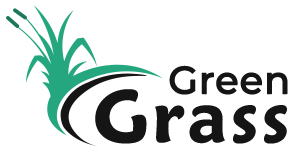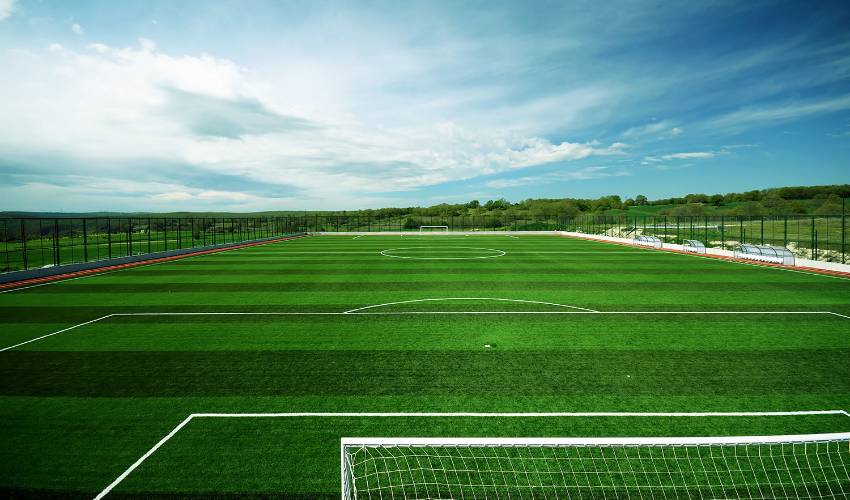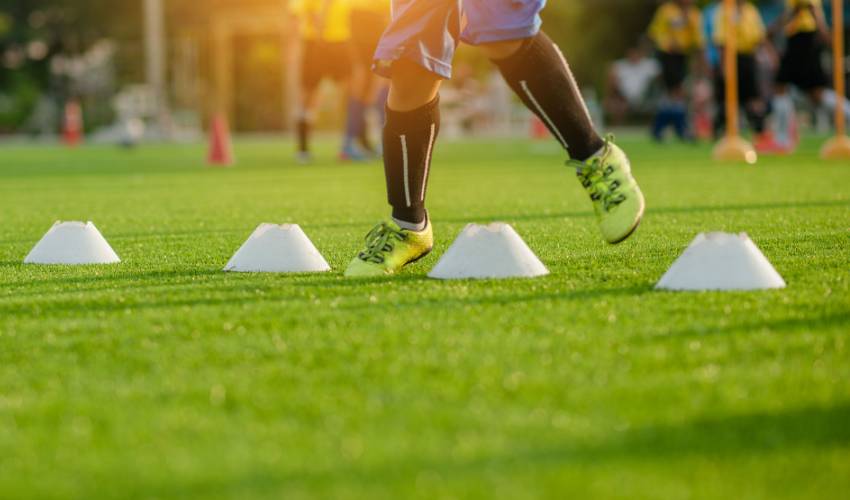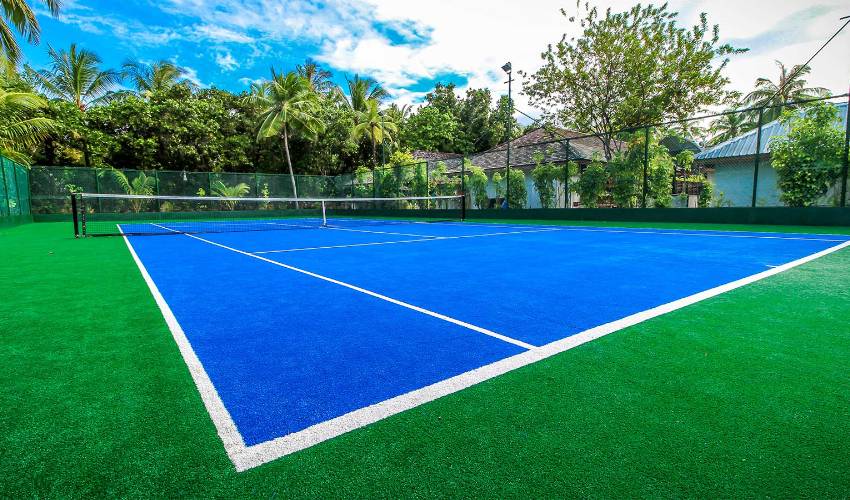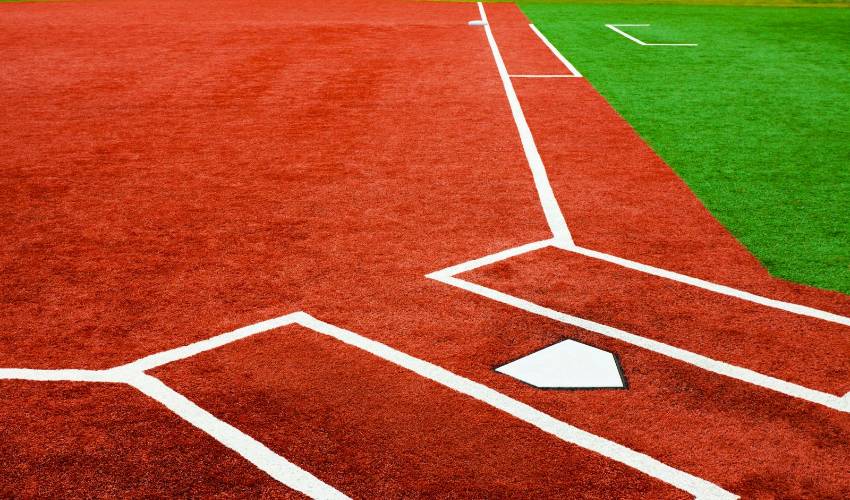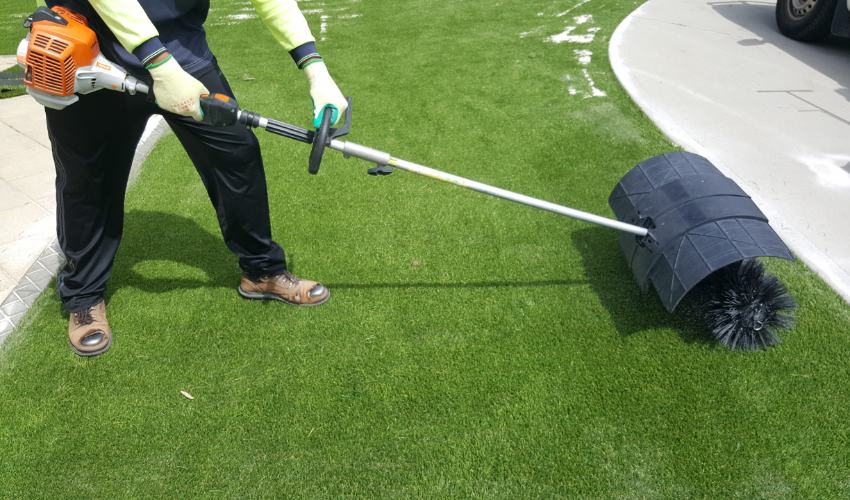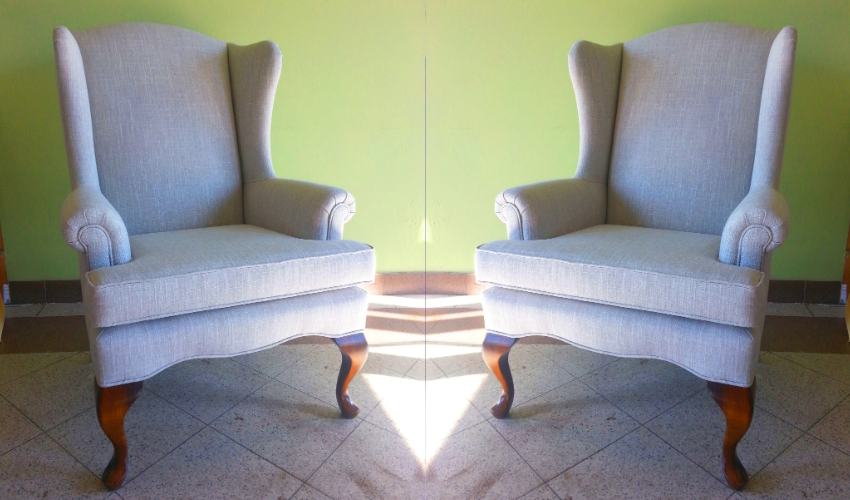Artificial turf, often known as synthetic turf or fake grass, has grown in favor in recent years as a versatile and long-lasting replacement for genuine grass in sports fields. This synthetic surface is constructed of synthetic fibers that resemble the appearance and texture of genuine grass. Its broad use has been encouraged by its various pros and cons of artificial turf In Sports, which have made it a popular choice in games, such as soccer, football, and baseball. In this article, we will walk you through the several benefits of sports artificial grass:
Pros And Cons Of Artificial Turf In Sports
-
Durability And Consistency
The extraordinary durability of artificial turfs is one of its key benefits. Unlike natural grass, which can wear and tear due to heavy usage and harsh weather conditions, synthetic turf maintains its steady playability over time. Because of this durability, sports fields may be used more frequently without fear of deterioration, making it a more cost-effective alternative in the long run.
-
All-Weather Playability
The suitability of Artificial Grass for Football Field all-weather situations is a crucial advantage. Unlike natural grass fields, which can turn muddy and slippery after rain, synthetic turf’s excellent drainage system lets water travel quickly, reducing the risk of water collection and ensuring that the field stays playable both during and after rain.
-
Lower Maintenance Requirements
Sports fields made of natural grass must be routinely cut down, fertilized, watered, and pest-controlled. On the flip side, artificial grass requires significantly less upkeep. There is no requirement for pesticide use, irrigation, or cutting. This helps to conserve the environment by using less water and toxic chemicals while also saving money on maintenance costs.
-
Reduced Water Consumptions
Adopting artificial turf can greatly reduce water usage concerns in areas with a water shortage. Synthetic turf completely replaces the need for water that is necessary for natural grass fields to remain lush and healthy. Artificial grass is a desirable alternative for towns and sports organizations looking to promote responsible water consumption because of this water-saving feature.
-
Enhanced Playing Surface
Artificial grass offers a leveled playing surface that reduces the divots, bumps, and uneven spots that frequently appear on fields made of natural grass. This constancy makes it possible for players to move predictably and to experience consistent ball roll and bounce, which promotes fair gameplay and the growth of player skills.
-
Versatility And Multi-Use
Sports grounds or football fields having artificial grass can be utilized for a wide variety of activities besides traditional sports. Synthetic turf endures considerable foot traffic and equipment without suffering significant harm, making it ideal for concerts, community events, and leisure activities.
-
Return On Investment
While the initial installation cost of synthetic turf can be higher compared to natural grass, its longevity and reduced maintenance expenses lead to substantial long-term savings. When properly maintained, artificial turf can last for many years, providing a favorable return on investment for sports organizations.
-
Aesthetic Appeal
Modern synthetic turf offers a visually beautiful field that maintains its lush green color all year long. It nearly resembles the appearance of genuine grass. This aesthetic appeal improves the atmosphere of sporting venues overall and makes it more enjoyable for players and spectators.
-
Injury Reduction
Artificial turf is created to offer a leveled, stable surface that lessens the likelihood of accidents. Synthetic grass gives a more level playing field in contrast to natural grass, which can form uneven spots or divots that raise the danger of tripping or twisting an ankle. Many artificial grass systems also have shock-absorbing features that lessen the possibility of player injuries by cushioning falls and impact.
-
Faster Surface Recovery
Natural grass fields frequently need a large amount of recovery time to return to their ideal playing conditions after excessive use or bad weather. Artificial turf, on the other hand, recovers quickly. Because there is no dirt present, its strong fibers stay upright and there is no mud to worry about. Faster surface recovery guarantees that sporting activities and practices can be continued right away without having to wait excessively for pitch upkeep.
-
Customizability And Performance Enhancement
Artificial grass can be configured to suit particular performance standards for various sports. The characteristics of the turfs such as the fiber length and density, the filler materials utilized, and the underlying cushioning, can all be altered to enhance gameplay for different sports. Because of the consistent ball roll, bounce, and player traction made possible by this customizability, the overall experience and skill development across all disciplines are improved.
-
Environmental Sustainability
Although creating artificial turf initially has an impact on the environment, its long-term benefits can support sustainability. Reduced use of water, insecticides, and fertilizers contributes to resource conservation and lowers the release of hazardous chemicals into the environment. Furthermore, synthetic turf can endure for many years, it reduces the need for constant replacement and significantly lowers the amount of waste produced.
Coming To An End
Beyond the initial allure of its longevity and low maintenance needs, artificial turf in sports grounds has many benefits like advantages of artificial grass for garden. It is a very appealing option for sporting facilities because of its capacity to lower injuries, recover rapidly from heavy use, improve performance, contribute to environmental sustainability, and provide year-round accessibility. Synthetic turf is positioned to significantly enhance its qualities as technology and materials advance, making it an even more adaptable and player-friendly option for sports grounds throughout the world.
